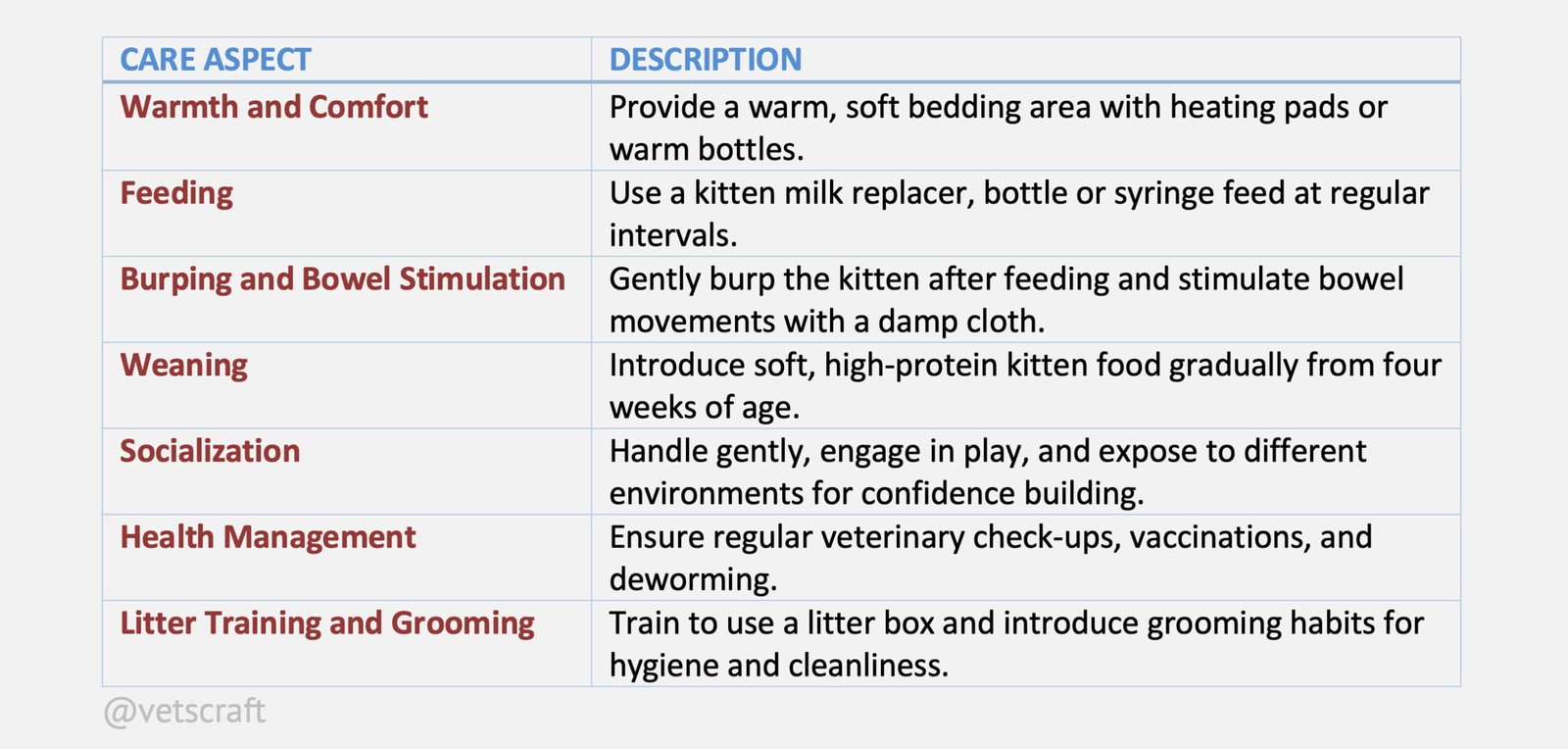Rearing of an Orphan Cat
Rearing an orphan cat requires dedicated care, warmth, and proper nutrition to ensure survival and healthy development. In the absence of a mother, maintaining an appropriate body temperature is crucial, as young kittens cannot regulate their own heat.
A warm, soft bedding area with heating pads or warm bottles helps provide comfort. Feeding should be done using a kitten milk replacer (feline cerelac) through a bottle or syringe at regular intervals, mimicking a mother cat’s nursing schedule.
Temporary care requires if the dam is ill or has had a caesarean section. In some case like death of mother or refusal to care for kitten require complete care.
The needs of this kitten are same as that of others. Most important care is provision of ambient environment to the kitten; the sleeping area should be slightly warmer than the body temperature of cat.
Since orphans did not receive colostrum, care must be taken to minimize exposure to pathogens or chilling.
Orphans can be fed using either a commercial kitten formula or a homemade formula. For the first few days, kittens should be fed every 2 to 3 hours. This can be decreased slightly to every 4 to 5 hours until the kittens are 3 weeks of age. From 3 to 6 weeks, they should be fed at least 4 times per day.
Eye dropper can be used to feed the food to newborn kittens because only small quantity is fed at a time.
During the first 5 to 5 days, orphaned kittens should be weighed daily as a means of monitoring health. It is the goat when caring for orphans that they achieve near-normal rate of weight gain.
For the first 2 weeks of life, the kitten must also be stimulated to urinate and defecate by stroking the belly, genital, and anal areas with a washcloth dampened with warm water.
At 3 weeks kitten can be introduced to semisolid food and gradually weaned, just as if the mother were present.


